Regions Where Ticks Live
Of the many different tick species found throughout the world, only a select few bite and transmit bacteria, viruses, and parasites, or pathogens, that cause diseases in people. Of the ticks that bite people, different species of ticks transmit different pathogens. These maps show the general distribution of medically important human-biting ticks in the contiguous United States. Populations of ticks may be found outside shaded areas. Naturally occurring populations of the ticks described below do not occur in Alaska; however, the brown dog tick occurs in Hawaii.
Note that adult ticks are the easiest to identify and male and female ticks of the same species may look different. Nymphal and larval ticks are very small and may be hard to identify.
For detailed information about ticks in your county, visit the interactive Tick Surveillance maps.
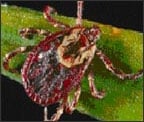
Where found: D. variabilis is widely distributed east of the Rocky Mountains. Also occurs in limited areas on the Pacific . Newly described D. similis is found west of the Rocky Mountains. More research is needed to understand the role of these species in disease transmission.
See county-level estimated and established distribution.
Transmits: Tularemia and Rocky Mountain spotted fever.
Comments: The highest risk of being bitten occurs during spring and summer. Adult females are most likely to bite humans.
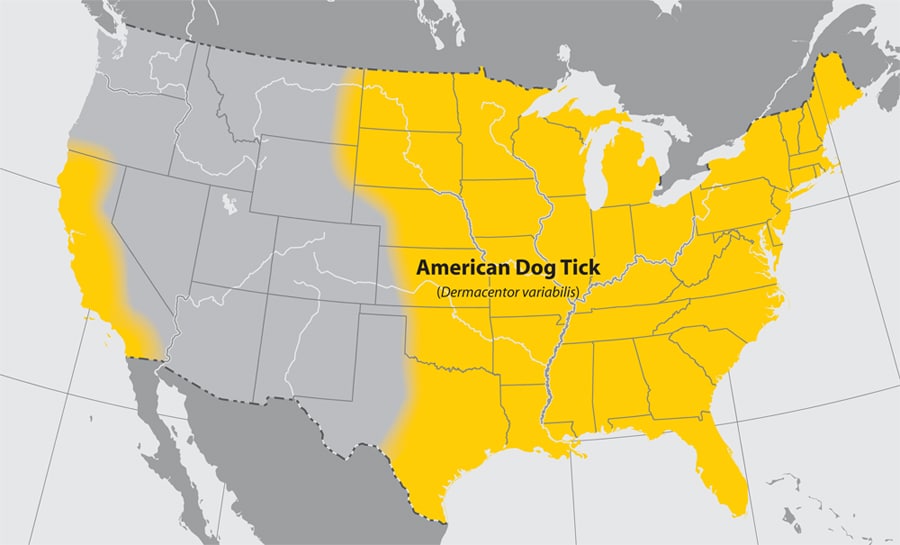
About This Map
This map is not meant to represent risks for a specific tick-borne disease, because disease transmission is influenced by multiple factors beyond mere tick presence. This map has been designed to answer the question “What ticks should I be concerned about at a regional scale?” Please consult a local public health authority or USDA Agricultural Extension Office to determine more specific information at the state, county, or municipal level. Background data for this map is from the US National Atlas.
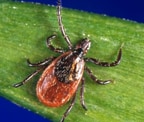
Where found: Widely distributed across the eastern United States.
See county-level estimated and established distribution.
Transmits: Borrelia burgdorferi and B. mayonii (which cause Lyme disease), Anaplasma phagocytophilum (anaplasmosis), B. miyamotoi (hard tick relapsing fever), Ehrlichia muris eauclairensis (ehrlichiosis), Babesia microti (babesiosis), and Powassan virus (Powassan virus disease).
Comments: The greatest risk of being bitten exists in the spring, summer, and fall. However, adults may be out searching for a host any time winter temperatures are above freezing. Stages most likely to bite humans are nymphs and adult females.
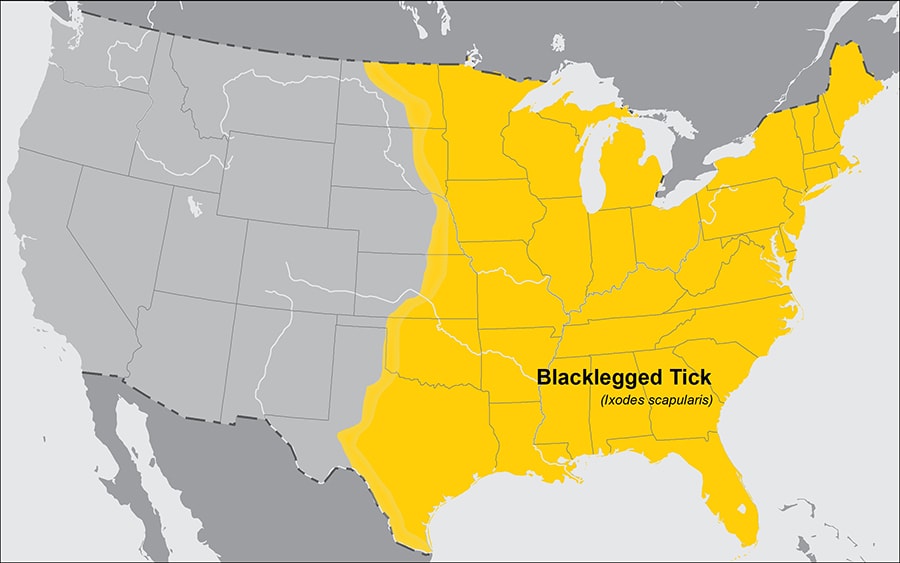
About This Map
This map shows the estimated distribution of Ixodes scapularis tick populations, commonly known as blacklegged or deer ticks. However, tick abundance within this area varies locally. The map does not represent the risk of contracting any specific tickborne illness. Please consult your local health department or Cooperative Extension office to learn about the risks of tickborne disease in your local area.
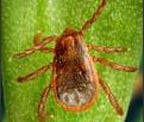
Where found: Worldwide.
Transmits: Rocky Mountain spotted fever (in the southwestern U.S. and along the U.S.-Mexico border).
Comments: Dogs are the primary host for the brown dog tick in each of its life stages, but the tick may also bite humans or other mammals.
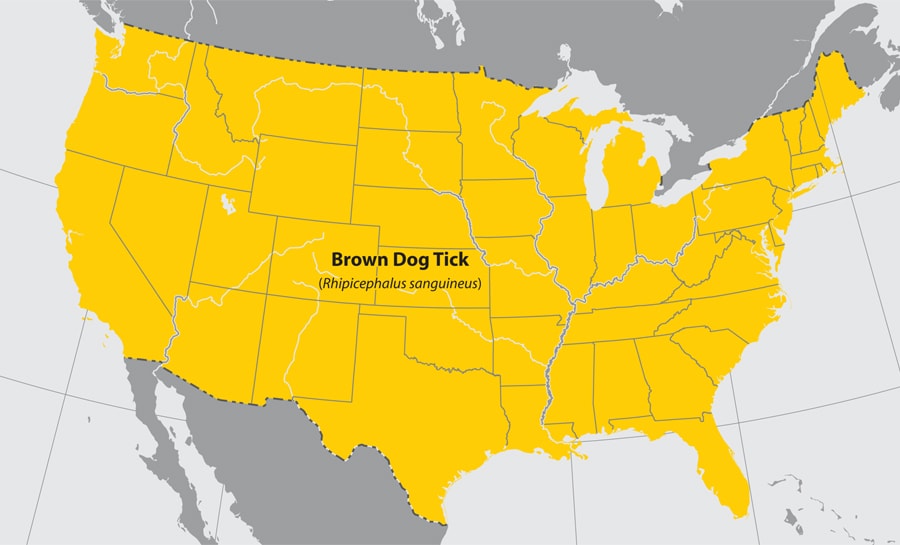
About This Map
This map is not meant to represent risks for a specific tick-borne disease, because disease transmission is influenced by multiple factors beyond mere tick presence. This map has been designed to answer the question “What ticks should I be concerned about at a regional scale?” Please consult a local public health authority or USDA Agricultural Extension Office to determine more specific information at the state, county, or municipal level. Background data for this map is from the US National Atlas.
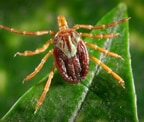
Where found: Coastal areas of the U.S. along the Atlantic coast and the Gulf of Mexico.
Transmits: Rickettsia parkeri rickettsiosis, a form of spotted fever.
Comments: Larvae and nymphs feed on birds and small rodents, while adult ticks feed on deer and other wildlife. Adult ticks have been associated with transmission of R. parkeri to humans.
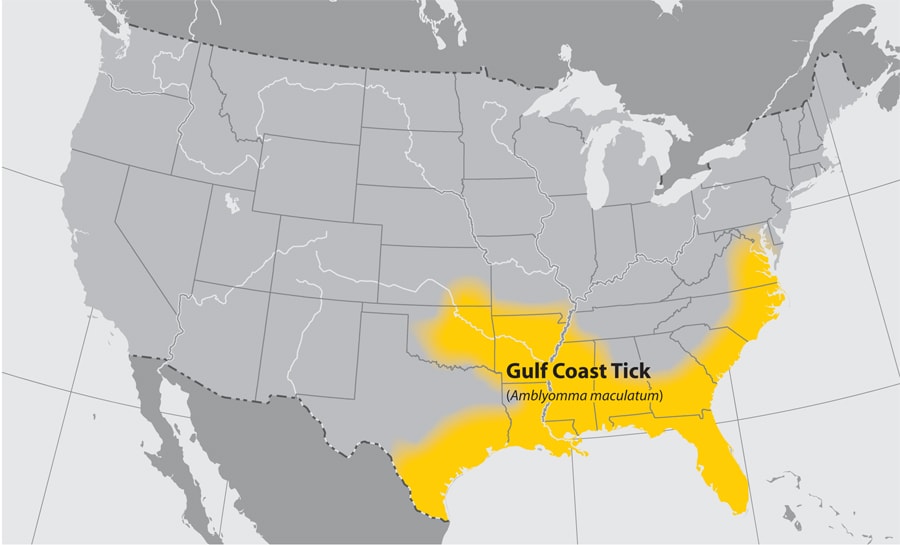
About This Map
This map is not meant to represent risks for a specific tick-borne disease, because disease transmission is influenced by multiple factors beyond mere tick presence. This map has been designed to answer the question “What ticks should I be concerned about at a regional scale?” Please consult a local public health authority or USDA Agricultural Extension Office to determine more specific information at the state, county, or municipal level. Background data for this map is from the US National Atlas.
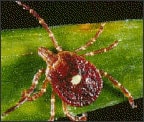
Where found: Widely distributed in the eastern, southeastern, and south-central United States.
See county-level estimated and established distribution.
Transmits: Bourbon virus, Ehrlichia chaffeensis and Ehrlichia ewingii (which cause human ehrlichiosis), Heartland virus, tularemia, and STARI. Growing evidence suggests that alpha-gal syndrome (red meat allergy) may be triggered by the bite of lone star ticks; however, other tick species have not been ruled out.
Comments: A very aggressive tick that bites humans. The adult female is distinguished by a white dot or “lone star” on her back. Lone star tick saliva can be irritating; redness and discomfort at a bite site does not necessarily indicate an infection. The nymph and adult females most frequently bite humans and transmit disease.
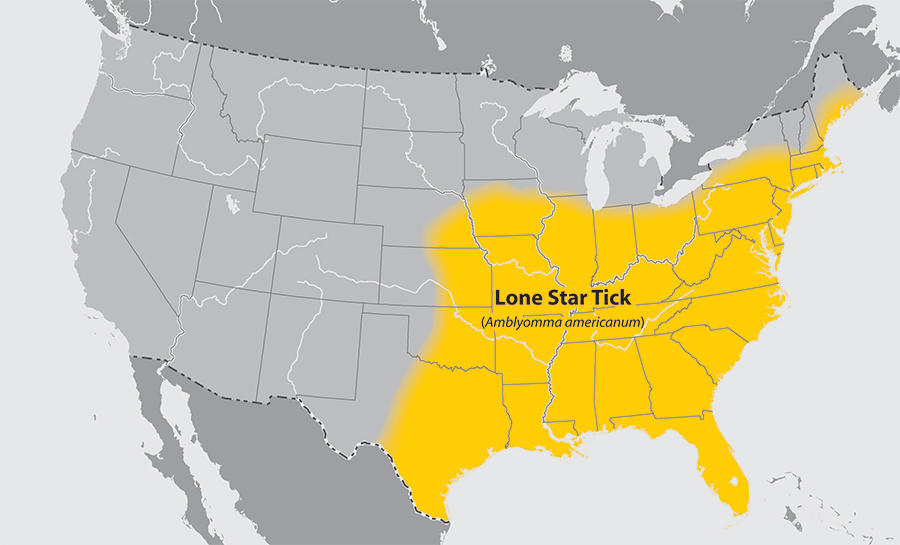
About This Map
This map is not meant to represent risks for a specific tick-borne disease, because disease transmission is influenced by multiple factors beyond mere tick presence. This map has been designed to answer the question “What ticks should I be concerned about at a regional scale?” Please consult a local public health authority or USDA Agricultural Extension Office to determine more specific information at the state, county, or municipal level. Background data for this map is from the US National Atlas.
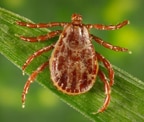
Where found: Rocky Mountain states and southwestern Canada from elevations of 4,000 to 10,500 feet.
Transmits: Rocky Mountain spotted fever, Colorado tick fever, and tularemia.
Comments: Adult ticks feed primarily on large mammals. Larvae and nymphs feed on small rodents. Adult ticks are primarily associated with pathogen transmission to humans.
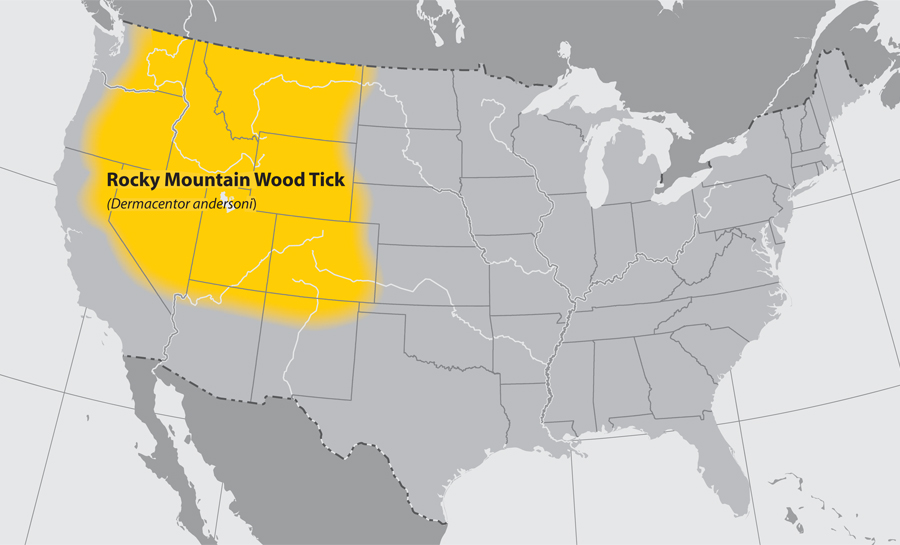
About This Map
This map is not meant to represent risks for a specific tick-borne disease, because disease transmission is influenced by multiple factors beyond mere tick presence. This map has been designed to answer the question “What ticks should I be concerned about at a regional scale?” Please consult a local public health authority or USDA Agricultural Extension Office to determine more specific information at the state, county, or municipal level. Background data for this map is from the US National Atlas.
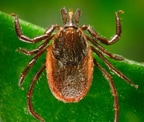
Where found: Along the Pacific coast of the United States, particularly northern California.
See county-level estimated and established distribution.
Transmits: Anaplasma phagocytophilum (anaplasmosis), Borrelia burgdorferi (Lyme disease), and B. miyamotoi (hard tick relapsing fever)
Comments: Larvae and nymphs often feed on lizards, birds, and rodents, and adults more commonly feed on deer. Although all life stages bite humans, nymphs and adult females are more often reported on humans.
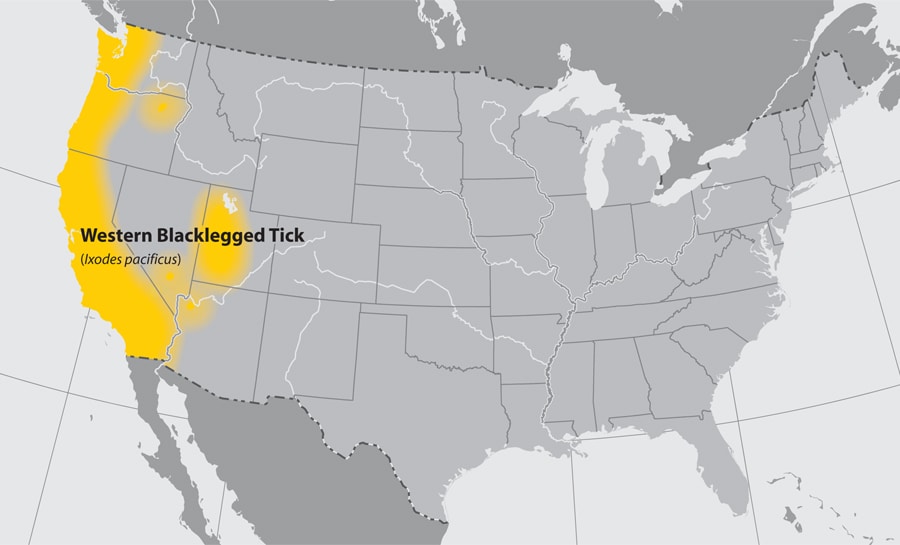
About This Map
This map is not meant to represent risks for a specific tick-borne disease, because disease transmission is influenced by multiple factors beyond mere tick presence. This map has been designed to answer the question “What ticks should I be concerned about at a regional scale?” Please consult a local public health authority or USDA Agricultural Extension Office to determine more specific information at the state, county, or municipal level. Background data for this map is from the US National Atlas.